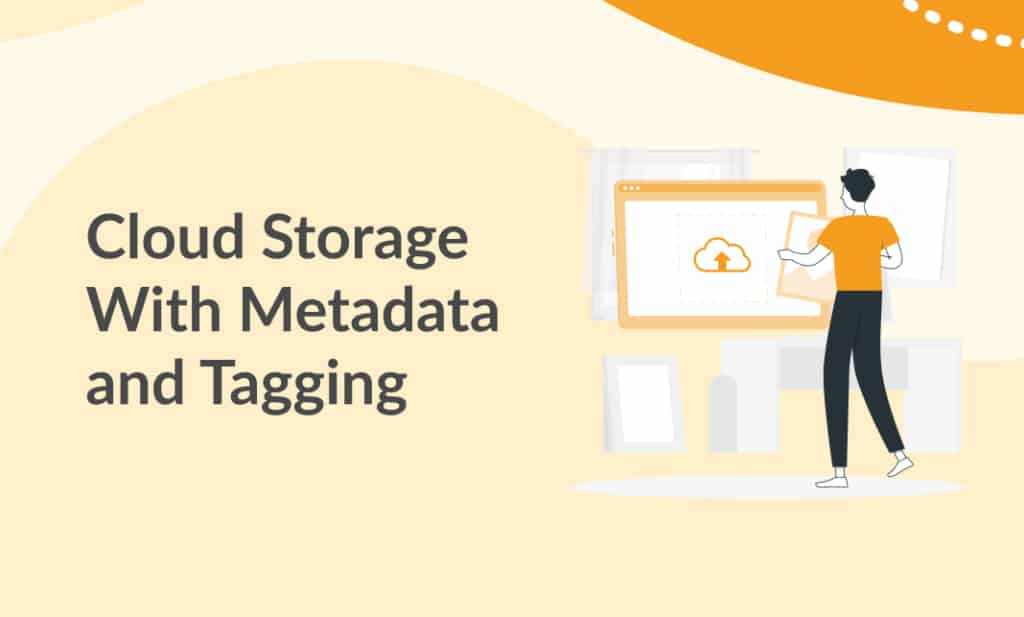The Google dictionary defines metadata as information about data. That is a good definition, as far as it goes, but what does that really mean to the user who is trying to manage data about his or her firm, for a thesis, or as parts of a survey that needs to be collated and analyzed? For them, metadata is a way of describing categories of information, methods of cataloging it, and ways to discover how it is different and how it is similar.
Explaining Metadata
Metadata was a big part of Web 2.0, which was characterized by a transformation from static, owner generated websites to dynamic websites with user-generated content, animation, and more. Web 2.0, the second phase of the World Wide Web, also ushered in social media where the entire focus of a website could be user-generated information – posts by users, comments by others, sharing, copying and resending objects. The World Wide Web was already a large, confusing place, encompassing as it did educational, commercial and government websites as well as the occasional hoax. There needed to be a way to define, locate, and manage the already growing ocean of information – to say nothing of misinformation.
Using Tags
Enter tags. Tags are not new. In fact, tagging has long been a practice of museums, retailers and anyone else who needs to locate information. A tag can indicate a type of information and point to its place among other pieces of information. Libraries have been doing this since the Great Library at Alexandria – creating labels that point toward a location on the library shelves. Labels help users to understand that unicorns should be in the section on mythology and are unlikely to be found filed with horses – even though an equine form is common to both. Because of this commonality, a library research might find unicorns associated through keywords, not only with horses but also cross-referenced to Pegasus – another mythological creature with an equine form. However, if you are searching for information in a brick and mortar library, you might need to pull books from two or three different shelf sections to find the information you are seeking.
Metadata and Tag Clouds
Metadata and tag clouds make locating related information much easier and quicker than using a library index and searching through bound books for the tidbits needed. In fact, tag clouds are sometimes displayed as an art form that is driven by the popularity of various searches on a website. To go back to our library analogy, if we searched for the term “equine” in Google, we would obtain a definition, plus a list of websites. By going to the website, TagCrowd and entering the URL of the search result, we would get the following tag cloud shown beside this paragraph.
We would also get something of a surprise. While we have been operating with the idea that “equine” should bring up unicorn and Pegasus, nothing of the sort has happened. Why? Because the term equine is more commonly associated with ordinary horses. Let’s try again.
Broadening Search
If we add the keyword search terms equine mythological creatures, we get a much more promising result that includes not only unicorns and Pegasus but other mythological equines as well. Let’s take a fresh look at that tag cloud now.
Now you can see that “horses” is still the biggest word in the chart, followed up by “mythological” and “mythical.” Pegasus is in print slightly larger than the unicorn, and hippocampus is comparatively small and faint. What has happened here?
The answer is that the Tag Crowd graphic art generator has used the frequency of appearance of each of the words to give them a certain weight. This can, by the way, be a useful way to see what keywords are used most often in searches – something that can be useful to writers who are trying to optimize their blogs or other web documents so that the search engines can find them.
Using Metadata and Tags in Your Business
By now, you might be thinking that this is very pretty, but that it probably doesn’t have much application for your business or project. Soon you will see, however, that it can be very useful, indeed, and that you will be able to use cloud storage with metadata when storing your own documents.
You probably won’t have much call for mythological equines, but the same principles work for any sort of data. Let’s suppose for a minute that you are setting up a new account with a cloud storage company, such as Folderit.
Working with Folderit
Folderit was recently voted as the most user-friendly document management system in the world, and there is a good reason for that. Once your account is set up, your information is entered into folders – in much the same way you might save data on your personal computer hard drive. Each of those folders is labeled in a way that is meaningful for you – accounts payable, accounts receivable, investment savings, expansion project, or whatever works for you. As you have business transactions, you can enter them in the correct folder.
Tags Across Folders
But what happens if you need to track an item through several transactions? Let’s suppose that you have a construction business, and you have contracted to put shingles on three houses. It just so happens that each of these houses will be shingled with the same type and color of shingle, so you order the materials in bulk. The shingles are added to accounts payable, for the company where you buy materials. The completed job entries go into accounts receivable, to be collected from customers. Somehow in all of this, as you do a physical inventory of your supplies, you come up short five bundles of shingles. How can you track the missing shingles?
The answer is cloud storage with tags. If you assigned a parts number – a tag, if you will, to the shingles and that number, with the number of shingles used, can be entered on the work orders and receipts. That way you can easily track purchases and resales to customers, as well as keep up with inventory.
With a tag assigned to that particular style and color of shingle, it is easy to search your cloud using that tag. It will work in the same way as when we entered “equine mythological” into the search engine and came up with mythical creatures that have characteristics of horses. In this same way, by using the assigned tag for the shingles you can locate every place that they were entered in your records. Your search for the shingle tag turns up your missing shingles. They are waiting on a truck because one of your three customers requested that a small shed be shingled to match the house.
Why does this work? Because the algorithm is set up so that when you enter a tag it will search not just one folder, but all folders. That way you can keep information recorded in the folder most relevant to it, but you can also connect information across several folders by using tags.
Working with Tags
A good cloud program will list all the places where the tag for which you are searching appears. It is a great way to detect the journey of a set of supplies from purchase to use. But the tag search has other uses, as well. It can help you track a customer’s orders, deal with payroll, and keep track of activities in a project folder where several employees are interacting across departments.
Summing Up Metadata and Tags
Let’s regroup and go back to the beginning. Metadata is information about data. It can be folder headings, descriptions, or keywords. It can be tags that are assigned to a particular class of data or to objects. Objects, in this case, need not be something so concrete and tangible as shingles. It could be something that exists only in digital format – an idea, or a group of ideas that can be labeled or tagged. When you tag someone in a picture on Facebook or other social media, you are creating a type of metadata because you are connecting pieces of information.
Facial recognition, that creature of current controversy, depends upon a type of data. In fact, it requires a lot of data to be effective. Facial recognition for a computer depends more upon the placement of key points in a photograph than on the shape of a nose or an ear – even though those can be key features for human recognition. Imagine a database that would contain millions of recordings of the way those key dots would be spaced on faces – and imagine how hard it would be to come up with distinct tags for each. This illustrates how computer information science is still in its infancy, and how important metadata and tagging can be for efficient information management.
Your operations are unlikely to be as complex as facial recognition – unless you install software that requires it. Even so, metadata and tagging can be an important part of efficiently managing your business transactions.



